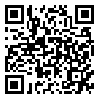Volume 8, Issue 1 (5-2021)
Human Information Interaction 2021, 8(1): 73-81 |
Back to browse issues page
Download citation:
BibTeX | RIS | EndNote | Medlars | ProCite | Reference Manager | RefWorks
Send citation to:



BibTeX | RIS | EndNote | Medlars | ProCite | Reference Manager | RefWorks
Send citation to:
HoseinRazavi S, Davoudpour Z, Tabibian M, Moeinifar M. Hybrid Urban Space and the Dichotomous Citizen Phenomenon in the 21st century; Case Study: Tehran. Human Information Interaction 2021; 8 (1)
URL: http://hii.khu.ac.ir/article-1-2931-en.html
URL: http://hii.khu.ac.ir/article-1-2931-en.html
Islamic Azad University,Qazvin
Abstract: (7773 Views)
Purpose: Technology has influenced cities to undertake fundamental functional changes and be recognized as a new appearance in the 21st century. These deviations have created a dual living space and citizens with varied behaviors. In other words, the hybrid urban space had shaped the citizen dichotomy with dual real-virtual function. This study is focused on the spatial-functional duality of citizens in Tehran through the virtual and the real world.
Method: Method was qualitative applied research in nature and purpose. Data collection was completed via simple random questionnaire and field documentation. Population was all residents of Tehran and sample consist of 559 people determined by Cohen's formula from 22 regions. Validity of the instrument was measured through 35 questionnaire and reliability was based on Cronbach's alpha.
Findings: There is a significant correlation between research variables. The relation of social interactions and the urban body takes precedence over technology. Consequently, this is an emphasis on citizen interaction with the city in the age of technology. In other words, technology plays the role of interface and communication facilitator.
Discussion and Conclusion: Result display that by the interaction of three main elements: city (physical context/body), citizen and technology - the phenomenon of dichotomous citizen and hybrid space in Tehran is increasing
Method: Method was qualitative applied research in nature and purpose. Data collection was completed via simple random questionnaire and field documentation. Population was all residents of Tehran and sample consist of 559 people determined by Cohen's formula from 22 regions. Validity of the instrument was measured through 35 questionnaire and reliability was based on Cronbach's alpha.
Findings: There is a significant correlation between research variables. The relation of social interactions and the urban body takes precedence over technology. Consequently, this is an emphasis on citizen interaction with the city in the age of technology. In other words, technology plays the role of interface and communication facilitator.
Discussion and Conclusion: Result display that by the interaction of three main elements: city (physical context/body), citizen and technology - the phenomenon of dichotomous citizen and hybrid space in Tehran is increasing
References
1. Ameli, Saeed Reza, Hassani, Hossein (2012) Dual Spatialization of Cyberspace Injuries and Anomalies: A Comparative Study of International Policies, Cultural Research Quarterly, Volume 5, Number 1, Spring (Persian)
2. Berman, Tal (2017), Public Participation as a Tool for Integrating Local Knowledge into Spatial Planning, human geography, social science, Springer. [DOI:10.1007/978-3-319-48063-3]
3. Caragliu, A., Del Bo, C., Nijkamp, P. (2009). Smart Cities in Europe. In Proceedings of the 3rd Central European Conference in Regional Science ˚ CERS2009 (pp49-59)
4. Donath, Judith S. (1996). Inhabiting the Virtual City: The design of social environments for electronic communities, Thesis for the degree of Doctor of Philosophy at the Massachusetts Institute of
5. Duany, A., Speck, J., & Lydon, M (2012). The Smart Growth Manual. (M. Molavi, Trans to persian.), Gilan, University of Gilan(Persian)
6. Electronic Journal of Educational Development of Social Sciences, (2017) Global Culture and Citizenship Rights (Article). Retrieved December 11, 2017 from https://mag.roshd.ir/(Persian)
7. Giffinger, R., Fertner, C., Kramar, H., Kalasek, R., Pichler-Milanovi, N., & Meijers, E. (2007). Smart Cities: Ranking of European Medium-Sized Cities. Vienna, Austria: Centre of Regional Science (SRF), Vienna University of Technology. Available at: http://www.smartcities.eu/download/smart_cities_ final_report.pdf.
8. Gordon, E. & de Souza e Silva, A. (2011). Net Locality. Blackwell Publishing Ltd. [DOI:10.1002/9781444340679]
10. Javid, Mohammad Javad, Mohammad Sadeghi and Mostafa Shafizadeh Kholenjani (2012) The Ratio of "Natural Duties" and "Citizenship Duties", Quarterly Journal of Judicial Law Perspectives, Autumn, No. 59, 90-94 (Persian)
11. Khatibi, Mohammad Reza (2013) The Interaction of Behavioral Patterns in Reviving the Identity of the City Environment, A Case Study of Sanandaj Entrance Area,Hoviat-e-Shahr )City Identity(, 7 (13), 73-63. (Persian)
12. https://www.kimiafekr.com
13. Pelton, Joseph N. and Indo B. Singh, (2009) Future Cities
14. Designing better, smarter, more sustainable and safer cities, Dr. Mahmoud Abdullahzadeh (2013) Tehran, Cultural Research Office Publications.
15. Rabari Chirag and Michael Storper (2013), The Digital Skin of Cities, Urban Theory and Research in the Sensored and Ubiquitous Computing and Big Data [DOI:10.1093/cjres/rsu021]
16. Sattari, Sahand (2015) The Triple Dialectic of Henry Lefebvre's Production of Space, Bi-Quarterly Journal of Philosophical Essays, No. 28, Fall and Winter, pp85-145. (Persian)
17. Zare Estahriji, Samaneh (2014), A Comparative Study of the Information City from the Perspective of William Mitchell and the Common City from the Perspective of Rome Koolhaus, Sixth National Conference on Urban Planning and Management, Mashhad, November. (Persian)
Send email to the article author
| Rights and permissions | |
 | This work is licensed under a Creative Commons Attribution-NonCommercial 4.0 International License. |






